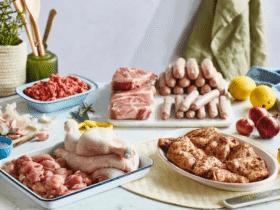Ever wondered why, even when you follow the same brewing recipe, your coffee never tastes the same as your favorite café’s? Chances are, you’re using different coffee beans. Selecting the right coffee beans can be an overwhelming task, especially with the wide variety of beans available in the market. But worry not, this guide will help you to understand the different factors to consider, from flavor profiles to roasting methods, so you can choose the coffee beans that suit your taste perfectly.
Arabica vs. Robusta: The Two Primary Coffee Bean Species
Understanding the difference between Arabica and Robusta coffee beans is essential, as it impacts the flavor and quality of your coffee. Here are the main differences:
- Arabica Beans: Known for their nuanced taste, Arabica beans have higher acidity levels, more fruity, floral, and sugar notes, and a more delicate texture. Arabica beans are more expensive to produce, as they require specific growing conditions and are more susceptible to pests and diseases.
- Robusta Beans: Mostly considered lower quality, Robusta beans have a stronger, more bitter taste due to higher caffeine content. They contain more chocolatey, earthy, and nutty flavors and are more affordable than Arabica beans. Robusta beans are more resilient and can be grown in harsher conditions, contributing to easier production.
While Arabica is generally considered superior, don’t dismiss Robusta beans. In some cases, a well-grown Robusta can produce a great cup of coffee, especially when blended with Arabica for additional depth and character.
Single-Origin Beans vs. Coffee Blends: What’s the Difference?
- Single-Origin Beans: These beans are harvested from a specific region, country, or coffee farm. Single-origin beans showcase the unique flavor characteristics of the region they’re from, offering a more distinct taste profile. If you’re looking to explore unique flavors or appreciate the art of coffee brewing, single-origin beans may be the right choice for you.
- Coffee Blends: A mix of beans from different origins, coffee blends are created to achieve a specific taste. Blended beans can offer a more balanced and consistent flavor profile and are typically favored by coffee shops to maintain the taste they’re known for. If you enjoy a more predictable flavor, a blend may be more suitable for you.
Specialty Coffee: What Makes it Unique?
Specialty coffee refers to a whole range of the coffee supply chain, from the cultivation of specific high-quality beans to the brewing and preparation techniques. Quality control is key for specialty coffee, ensuring a superior outcome. If you’re looking for exceptional quality and flavor, consider trying specialty coffee beans from a reputable roaster or café.
Unravelling the Flavor World of Coffee Beans
Depending on the origin, the taste of coffee beans can differ significantly. Here’s a general overview of flavor profiles by region:
- African Beans: Most known for their fruity, floral, and tea-like profiles. Ethiopian and Kenyan beans, for example, are particularly renowned for their complexity.
- Central and South American Beans: These beans showcase bright acidity, medium body, and well-balanced flavors. Expect flavors such as chocolate, caramel, and citrus fruits.
- Asian Beans: Due to the regions’ humid, tropical climate, these beans display a more earthy, herbal, and bold character. Sumatran and Indonesian beans are especially popular in the dark roast category.
It’s essential to consider these flavor profiles when selecting your coffee beans to suit your preference.
Coffee Roasting Levels: What do They Mean for Your Taste?

Roasting levels create variations in flavor, color, and aroma of coffee beans. Here are the main levels:
- Light Roast: Light brown color, bright acidity, and extra fruity or floral flavors. Light roast highlights the bean’s original flavor.
- Medium Roast: Medium brown color, balanced acidity and body, and a more pronounced aroma. Flavors range from chocolaty to fruity, depending on the bean’s origin.
- Dark Roast: Dark brown color (borderline black), low acidity, more intense flavors, and a bitter character. In this case, the roast plays a significant role in flavor development.
Brewing Methods and Their Effects on Coffee Taste
Selecting the right brewing method can dramatically affect your coffee’s taste:
- Drip Coffee: A balanced, clean, and consistent cup with a mild-to-medium body.
- French Press: A bold, rich, and full-bodied cup with an oily mouthfeel, allowing for more intense flavors.
- Pour-Over: A bright, clear, and intricate cup with a lighter body, ideal for highlighting beans’ nuanced flavors.
- Espresso: A potent, concentrated, and full-bodied cup, showcasing both the bean’s and roast’s intense flavors.
Find the brewing method that fits your preference and the type of coffee beans you’ve chosen.
Whole Bean Coffee vs. Pre-ground: Which One to Choose?
For maximum freshness and flavor, always opt for buying whole bean coffee and grinding it right before brewing. Pre-ground coffee quickly loses its freshness and aroma due to increased oxidation. Take note that different brewing methods may require different grind sizes – familiarize yourself with the grind size requirement for your chosen brewing method.
Conclusion and Recommendations
Choosing the right coffee beans for your taste requires knowledge of the bean varieties, flavors, roasting levels, brewing methods, and even grinding techniques. Understanding these factors will elevate your coffee experience and appreciation. To start, experiment with different flavor profiles and find your preference – be it fruity African beans or earthy Asian ones. Remember to try different combinations and brewing methods to understand how each process affects the taste of your coffee. Lastly, support local coffee roasters and cafes, as they’re often passionate about offering the best beans and brewing options for their customers. Happy coffee tasting!










Find Us on Socials